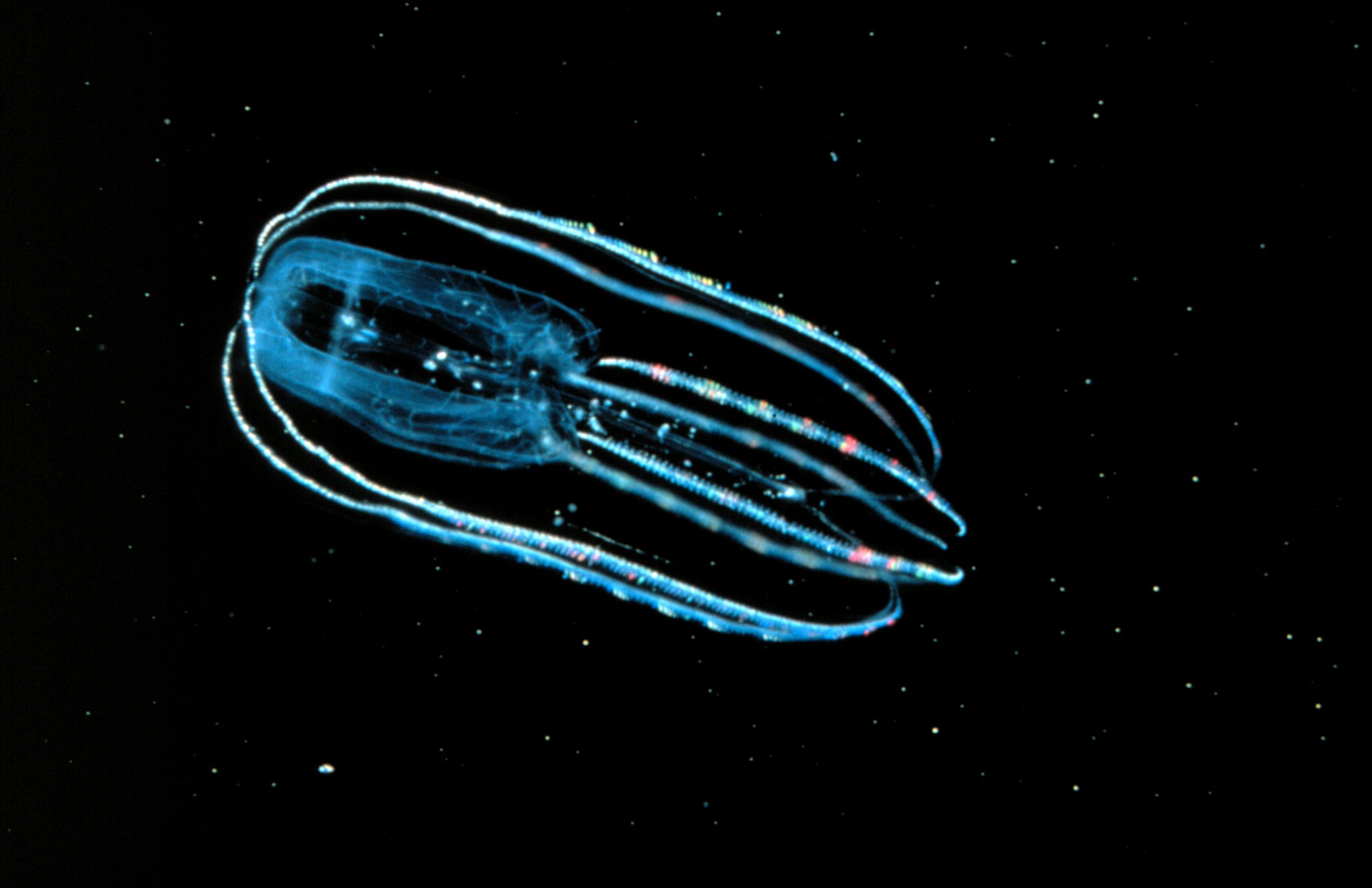Bioluminescence In Jellyfish
Biology 342 Fall 2010
Michelle Ichikawa
Adaptive Value
Bioluminescence as a Response to Predation
Bioluminescence in jellies serves a primarily defensive function. The bright flash of light is thought to startle predators, causing them to hesitate and allowing the animal a chance to get away. Here are some theories about a few of the different ways jellyfish and other related organisms may use bioluminescence to their advantage when facing a predator.
- While it has been observed only anecdotally, some siphonophores and ctenophores (see phylogenetic tree) are presumed to use bioluminescent body parts as “sacrificial tags.” If an organism loses part of its body to a predator, the lost tissues can continue to glow, even in the predator’s stomach. Since many deep- sea creatures are transparent, this draws attention to the predator and makes consuming bioluminescent prey risky. This could give the jelly time enough to regenerate lost tissue, or avert the predator completely. (Haddock et al, 2010)
- On land, it is widely accepted that bright coloration can advertise toxicity or unpalatability, and it is believed that the same mechanism may hold true for marine bioluminescence as well. Cnidarians in particular are thought use bioluminescence this way because they are fragile and it is advantageous to them to avoid physical encounters (as well to their opponents-jellyfish stings can be deadly). (Haddock et al, 2010, Herring and Widder 2004)
- Comb jellies, such as the species Beroe forskalii, can express bioluminescence internally, in cascading waves or otherwise. Other species, including some siphonophores, can emit glowing particles as part of an escape response, or emit chains of light in order to confuse their predator and make them harder to track. (Haddock et al, 2010, Herring and Widder 2004)

Lobate ctenophores are translucent and give off a bioluminescent glow. Note that the central blue glow is due to bioluminescence, but that the color along the comb rows are due to light diffraction. Bolinopsis infundibulum.
Picture: OAR/National Undersea Research Program (NURP)
Luciferins are also antioxidants
Recent interest in luciferin lies in the discovery that some corals and anemones use luciferins to scavenge free radical species in their cells, suggesting that jellyfish may do the same. Luciferins often have strong antioxidant properties, and this holds true for colenteramide, the byproduct of the light producing reaction. This implies that bioluminescence may also function as a natural defense against free radicals, or have evolved from such a defense. (Haddock et al, 2010)